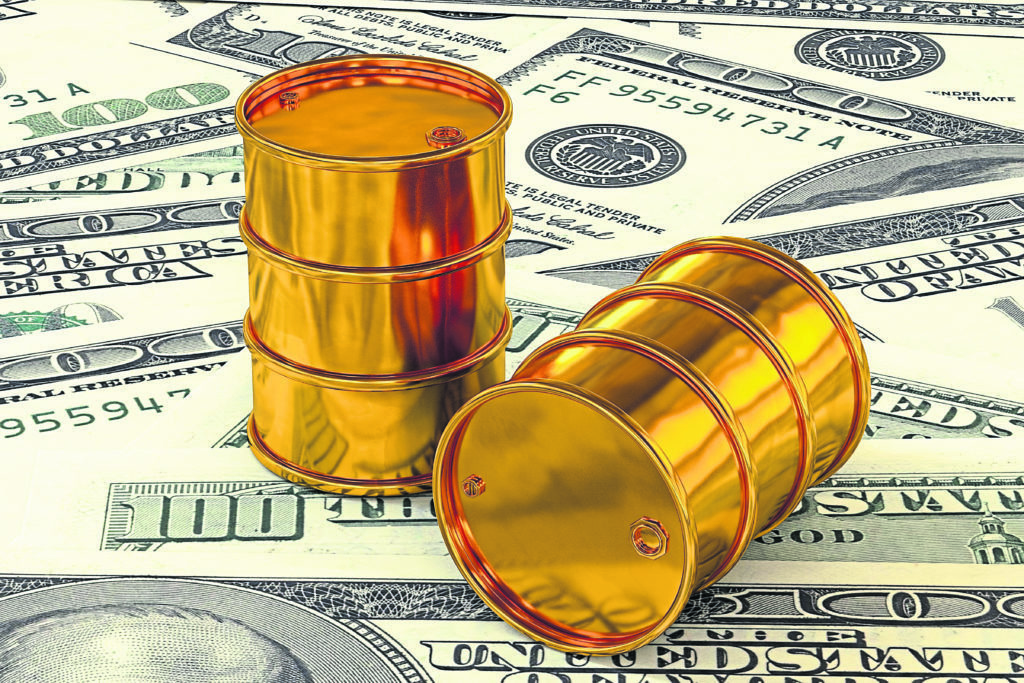
Oil in London extended losses for a third day on signs that the potential impact of impending U.S. sanctions on Iranian supplies may be mitigated.
Brent futures fell as much as 1.1 percent to below $84 a barrel, after retreating 2.5 percent over the past two sessions. Saudi Arabia can tap its spare production capacity immediately to offset any declines in Iranian crude exports, the kingdom’s crown prince said in an interview. Meanwhile, the U.S. was said to be in talks with countries that want to continue buying from the Persian Gulf state after American sanctions are reimposed Nov. 4.
Oil has rallied to trade near four-year highs on concerns that the looming U.S. restrictions on the Islamic republic will squeeze shipments and spur a global crunch at a time when supplies are already being disrupted in Venezuela and Libya. Investors remain concerned the Organization of Petroleum Exporting Countries and its allies aren’t raising output quickly enough and that they may not have the capacity to fully cover disappearing volumes.
“Prices are responding to the Saudis’ commitment to replace the lost Iranian barrels and that has calmed down some supply crunch fears,” Will Yun, a Seoul-based commodities analyst at Hyundai Futures Corp., said by phone. “It’s still a wait-and-see as to how much production will be boosted, so investors are likely to be cautious and trade in a narrow range until we get some more clarity next month.”
Brent for December settlement fell as much as 96 cents to $83.20 a barrel on the London-based ICE Futures Europe exchange, and was at $83.44 at 2:32 p.m. in Singapore. The contract slipped 0.5 percent to $84.16 on Friday. The global benchmark crude traded at a $9.70 premium to U.S. West Texas Intermediate for the same month.
Spare Capacity
WTI for November delivery traded at $73.79 a barrel on the New York Mercantile Exchange, down 0.7 percent. The contract added 1 cent to $74.34 on Friday. Total volume traded was about 7 percent above the 100-day average.
Following U.S. President Donald Trump’s pressure to tame surging crude prices, Saudi Arabia’s Mohammed Bin Salman said the world’s top exporter is doing its part by pumping near record levels. Output by OPEC’s top producer is now at about 10.7 million barrels a day, and it can add a further 1.3 million from its spare capacity “if the market needs that,” he said in the interview.
The Saudi crown prince also said he’s getting close to striking a deal with Kuwait on resuming production of two jointly owned fields that can produce half a million barrels a day of crude. The Khafji and Wafra fields are located in the Neutral Zone, a portion of the two nations’ border that’s been undefined for almost a century.
In the U.S., the Trump administration was in discussions with countries that want to continue Iranian oil imports after sanctions are reimposed early next month, according to two U.S. officials. One of the officials said China may cut back by more than expected, while India remains a wild card. Another official said various nations have sought waivers and these were being considered, though America was not looking to grant exemptions.
Other oil-market news: China halted purchases of U.S. crude in August for the first time since September 2016, according to U.S. Census Bureau data Friday. Canadian oil prices capped their worst week in almost a decade, pushing the discount to U.S. crude to a new record low. Shanghai crude futures traded 1.3 percent higher at 570.9 yuan per barrel on Monday, resuming trading after a week-long holiday. This year’s longest buildup of hedge-fund bets on higher Brent crude prices is faltering, with bulls retreating for the first time in six weeks. Hedge funds’ net-long position — the difference between bets on higher prices and wagers on a drop — in Brent fell 2.9 percent to 481,945 contracts for the week ended Oct. 2.